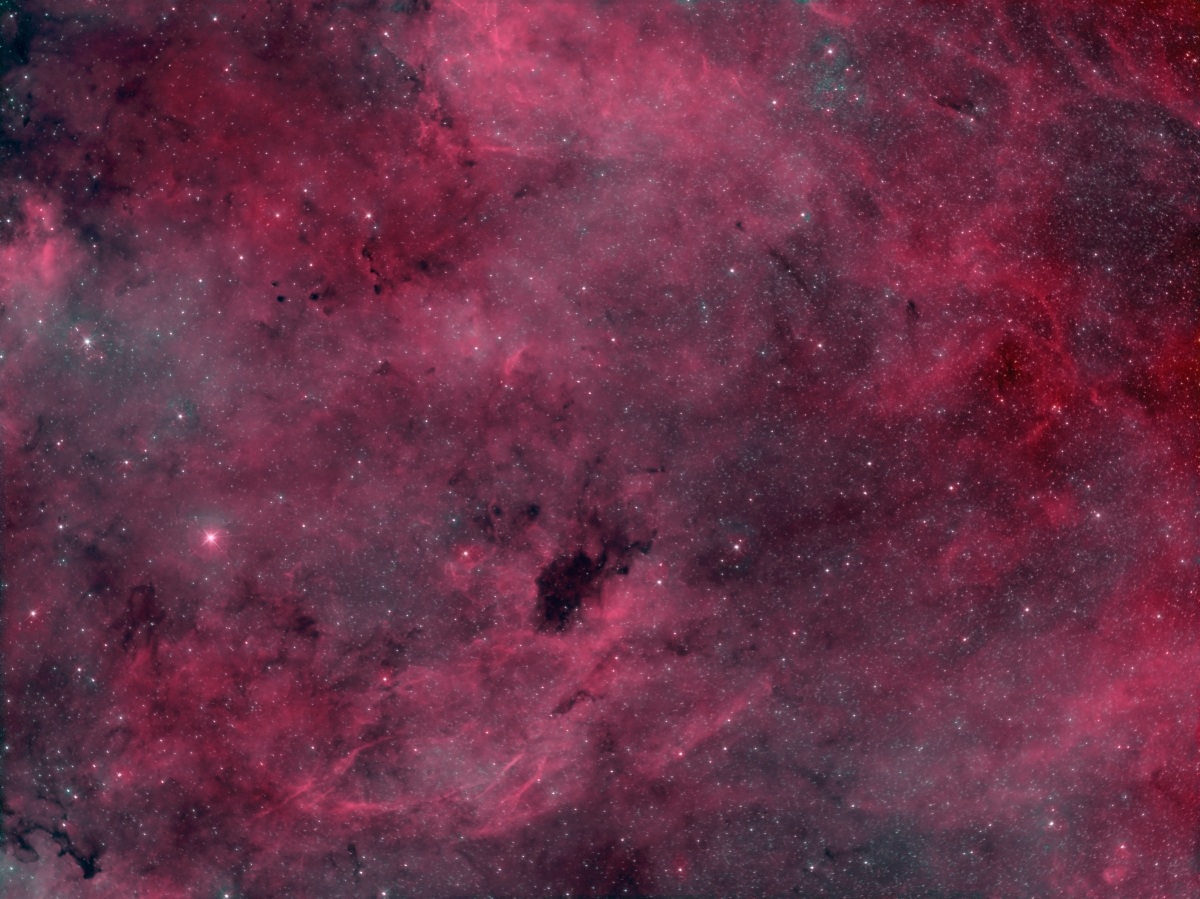
This area of nebulosity belongs to the Gamma Cygni Nebula Complex and is located a few degrees to the east of γ Cygni, the 3rd brightest star in Cygnus. The nebulosity pictured here is actually quite faint. It is composed mainly of hydrogen, which gives the nebula its red glow that originates from H alpha line emission at 656.3 nm. The nebula is not of uniform brightness, there are in fact a few dark nebulae in front of it, the most conspicious of those is Barnard 343, below the image's center.
IC 1311 is the designation of the galactic star cluster situated near the upper edge, to the right, which has a brightness of 13.1 mag, is located at a distance of about 33 lightyears (which is very close), and has an apparant size of 5 arcminutes.
All individual patches of nebulosity have designations in Lynd's Bright Nebulae (LBN) catalog. The patch at the left image border is designated LBN 241, the bright elongated patch at the upper left is LBN 251, which is followed by LBN 239 towards IC 1311. LBN 223 surrounds B343 and the patch of nebulosity at the lower right is designated LBN 216. Only the very brightest parts can be glimpsed visually in a rich-field telescope.
The nebulosity emits all of its light in isolated emission lines. The most prominent of those are the Hα, [OIII] and [SII] lines, which were exclusively recorded to obtain the image shown above. This is a "natural color" composition mixed so that the resulting colors are close to the visible spectrum of the human eye. The following mixture was used:
This mixture is proposed by J-P Metsavainio and Richard Crisp.
 LBN 242 and Surrounding Nebulosity, Western Cygnus, telelens photograph.
LBN 242 and Surrounding Nebulosity, Western Cygnus, telelens photograph.
 IC 1311 and Surrounding Nebulosity in Hα, which is part of this image.
IC 1311 and Surrounding Nebulosity in Hα, which is part of this image.
Exposure Data